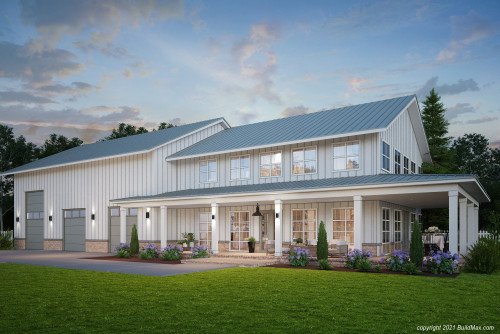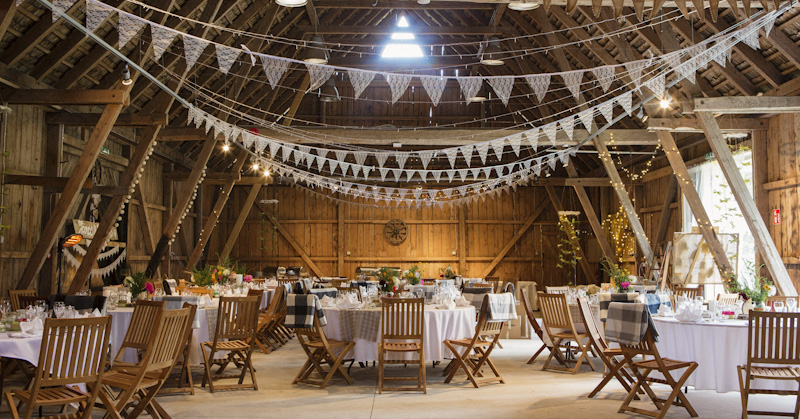Cost Effective Barndominium Builder: Develop Your Perfect Living Space
Barndominiums Vs. Typical Homes: a Thorough Comparison of Way Of Life and Functionality
The choice in between barndominiums and conventional homes incorporates various aspects, including way of life choices and functional demands. Barndominiums are identified by their open layouts and versatility, usually appealing to those that focus on public living and flexibility. On the other hand, typical homes provide an even more organized setting, which may better serve households looking for personal privacy and a sense of history. As we take a look at the price implications and environmental considerations, it ends up being clear that the selection expands past mere aesthetics and capability; it invites a deeper exploration of what really specifies a home.
Review of Barndominiums
Barndominiums, an unique real estate pattern obtaining popularity throughout various areas, mix the rustic appeal of barn-style style with the performance of modern-day home. These one-of-a-kind structures normally contain a metal or timber structure, combining open flooring strategies and high ceilings with energy-efficient features. Commonly situated on extensive country residential or commercial properties, barndominiums use homeowners the chance to appreciate a serene lifestyle while supplying enough area for various activities.
The adaptability of barndominiums expands past their aesthetic appeal; they can function as both living quarters and practical areas for leisure activities, workshops, and even small companies. Their adaptive style permits very easy modification, suiting varied family needs and preferences. Many owners appreciate the low upkeep needs linked with steel siding and roofing, adding to long-term resilience.

Features of Conventional Residences
Emphasizing ageless layout and convenience, conventional homes are identified by their distinct architectural designs, which often show historic impacts and regional appearances. Common functions consist of balanced exteriors, gabled roofs, and an emphasis on workmanship, causing a cozy and welcoming atmosphere.
Conventional homes commonly include elements such as crown molding, wainscoting, and hardwood flooring, enhancing their traditional charm. They commonly include numerous rooms with defined purposes, promoting family interaction while enabling privacy. website. The layout frequently includes formal living and dining areas, which are conducive to entertaining guests and holding household gatherings
Exterior materials such as block, timber, or stone are often used, adding to resilience and a sense of durability. Barndominium repair. In addition, lots of standard homes are created with front patios or stoops, fostering a sense of area and link with the neighborhood
Landscaping plays a substantial function in conventional home design, with properly maintained yards and pathways that enhance aesthetic charm - learn more. On the whole, typical homes symbolize a sense of fond memories and stability, interesting those that value heritage and a more organized living atmosphere
Price Contrast
Generally, a price comparison in between barndominiums and standard homes reveals substantial differences in building and construction costs and overall financial investment. Barndominiums, frequently created from metal or steel structures, generally sustain lower product and labor costs than standard homes built from wood and block. The simplified style of barndominiums can convert to decreased building and construction times, even more lowering labor prices Continue and expediting tenancy.
Generally, the price per square foot for a barndominium ranges from $100 to $150, while standard homes can differ widely, normally falling between $150 and $300 per square foot, depending upon area, materials, and design complexity. This expense difference makes barndominiums an attractive option for budget-conscious purchasers looking for bigger living spaces without compromising high quality.
In addition, barndominiums might lead to long-term cost savings with reduced upkeep prices, power efficiency, and insurance rates. Their resilient building products commonly call for much less maintenance with time contrasted to typical homes. However, it is important to consider that while initial costs may be lower for barndominiums, the last financial investment will certainly additionally rely on specific personalization and preferred features, which can influence the overall expense in both housing kinds.
Way Of Living and Room Considerations
When considering way of living and area, barndominiums use a distinct flexibility that interest a range of homeowners. These hybrid frameworks integrate residential coping with practical room, commonly featuring open layout that can be adjusted to fit individual requirements. This adaptability is specifically beneficial for family members or individuals looking for an individualized living environment, permitting diverse usages such as home workplaces, workshops, or leisure locations.

Moreover, the visual allure of barndominiums can cater to both rustic and contemporary tastes, making them a flexible option for different design preferences (Barndominium repair). Inevitably, the selection in between a barndominium and a standard home commonly rests on how well each option straightens with the house owner's way of life goals and spatial requirements, highlighting the relevance of taking into consideration personal priorities in the decision-making procedure
Environmental Impact and Sustainability
The ecological effect and sustainability of barndominiums existing engaging advantages contrasted to conventional homes. Primarily created from steel and other durable products, barndominiums are frequently constructed utilizing recycled resources, minimizing the demand for brand-new materials and lessening waste. Their design commonly highlights open spaces, which can cause lower energy intake for heating & cooling compared to standard homes with more fractional formats.
Furthermore, barndominiums can include sustainable functions such as solar panels, rainwater harvesting systems, and progressed insulation techniques, improving their power efficiency. The adaptability of their layout allows house owners to incorporate these technologies a lot more flawlessly than in numerous standard homes, which might require comprehensive retrofitting.
In addition, barndominiums usually call for less sources for building due to their easier, much more efficient designs (visit website). Overall, barndominiums represent a forward-thinking approach to lasting living, lining up with contemporary environmental top priorities.
Verdict
In recap, the option between barndominiums and traditional homes pivots on private way of life preferences and useful demands. Barndominiums, with their open layouts and lasting products, satisfy those looking for versatility and communal living. Conversely, typical homes use defined rooms that improve privacy and promote historical visual appeals. Each alternative provides distinct benefits, requiring mindful consideration of one's worths and needs when determining one of the most appropriate living setting.